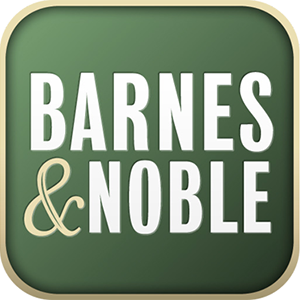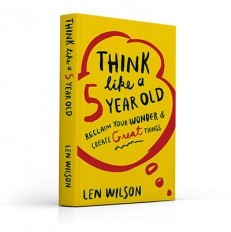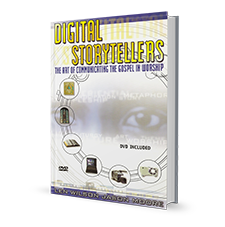Len Wilson's Blog, page 18
June 2, 2015
5 Tools to Launch Your Creativity This Summer
Today is launch day! In honor of my new book, Think Like a Five Year Old , here is how I learned to find more great ideas than I can ever actually use.
In the span of 18 months (1665-66), Isaac Newton invented calculus, constructed a theory of optics, explained how gravity works and discovered his law of motion.
You gotta clear away a lot of life to find a creative signal that strong. Unfortunately most of us have other things to do. I don’t know about Newton, but in between my creative moments I have to match socks and stuff.
How do you keep the creative juices flowing in the everyday?
Creativity isn’t sui generis pixie dust that falls from the ether on a lucky few. A lot of us have ideas. The problem is learning to clear enough of life away to capture, remember, and use them.
I developed a new workflow during the writing of my latest book, which is my tenth. The previous nine were fine, but this one – which is about creativity – is substantially better, in large part because of what I learned about the creative process while writing it.
The big thing is that I’ve always had a mental hum – a recurring flow of random thoughts and ideas in my head. These five tools helped me to learn how to capture this hum, which has exponentially increased my creative output.
The results have been personally astonishing. I used to struggle with ideas for blog posts; now I have over 100 unfinished concepts, from seed ideas to fully drafted ideas, ready to polish and publish. And they keep piling up faster than I can write them. (Now that I have a better workflow, it makes me sad for the all of the creative ideas that might have been.)
If you want to launch your creativity, these are 5 must-have tools.
1. Feedly
My creative process always begins with Input. Other people’s work is inspiration, and you can never have enough sources. The goal here is to find a good way to curate the web to your tastes. I use Feedly to collect and curate several dozen websites so I can wade through lots of articles quickly.
Feedly attaches to your Google account. If you have a favorite website you follow (here is one of my favorites) then just enter the domain at the “Add Content” button and it will file it away. Then, I access my account with the Feedly iOS app and – boom – instead of playing Candy Birds or whatever, I am filling the holes in my day with something helpful.
There are plenty of competitors, too, such as Flipboard. It’s just that Feedly is my favorite.
2. Moleskine Journal
Okay, now we’re going old school. Several years ago I made a conscious decision to begin carrying around a Moleskine journal. Some people thought I was losing my digital edge. I had to train myself to carry it and use it. The reason is this:
It used to be that an idea would enter the roustabout in my head and then exit out the other side while I was busy congratulating myself on it. Now I have learned if something interesting shows up, WRITE IT DOWN, good, bad, weird, random, or awesome.
Several of my previous works started with a crazy pile of post-its, ripped paper scraps and napkins. (Kind of like another author I know.) How much better to capture everything to a single location!
I put everything in it, including reflections on books and magazines I’m reading, personal entries, what I call the “big ideas,” sermon notes, and so on. When a journal fills up, I create an index for the front so I can easily find information in the 240-page book.
3. Voice Dictation in iPhone’s Pages
It just so happens that some of my best creative time happens during the afternoon commute. As I process the day, a new thought comes to mind. The Moleskine isn’t great for driving. (Although sometimes Atlanta traffic moves so slow I could write this blog post while at a dead stop.) While previously these thoughts were goners, the voice dictation feature allows me to open up a new Pages document and start talking.
Pages is Apple’s word processor. The dictation feature capture 90% of what I am saying – usually enough to dicepher later while seated at my desk. It even converts the words “question mark” to an actual question mark.
One of Pages’ best features is iCloud synchronization. With my latest book, as I moved into the development phase of the writing process, turning fragments into chapters, I worked on the same document from a variety of locations, including my laptop, my iPad, my iPhone, and a web browser. This encouraged multiple reads and edits, so my chapters ended up a lot more vetted than they would have been.
4. Evernote
This cloud-based collector is where I send my half-baked ideas for organization. Evernote holds text, audio, website links, and images.
After filling a couple of the Moleskine journals I moved in to Evernote. I didn’t transcribe everything, though; rather, I took images of my journal pages and uploaded them. Here is where the book really began to take off, because as I created folders and assigned keywords for like-minded ideas, I began to see patterns in seemingly random musings.
You can write directly in Evernote but it’s a little limited, like writing in a simple text editor, so I prefer it for its filing power and ability to help me find structure in my thoughts.
5. This Blog
Even better, improve your creative process by creating a deadline for yourself!
This blog is a beast – it needs constant feeding. But beyond the publishing pressure, its major benefit is the need to distill concepts into short (600-1000 word), bite size chunks for easy web digestion. The old Steinbeck aphorism that if you can’t say something in one sentence, thousands won’t do, applies here – I have found that the tight word limits of a blog post force me to greater clarity.
These tools help clear away the interruptions of life and allow me to focus on a creative process for greater productivity. They work for me in writing but can work for anyone who has to develop an idea. What are your favorite tools?
Want more tips on how to enhance your creativity? Buy my book on reclaiming your creative wonder: Think Like a Five Year Old.
This is a new version of a previous post on lenwilson.us and can be found at lenwilson.us/5-tools-creativity
About the Author
 Len Wilson Facebook Twitter Google+
Len Wilson Facebook Twitter Google+Writer. Story lover. Believer. Branding philosopher. Breakfast chef. Tickle monster. Dr. Pepper enthusiast. Creative Director. Occasional public speaker.


May 28, 2015
Unlearn Your Current Patterns: How to Find a More Creative Life 3
My new book, Think Like a Five Year Old, presents the story of creativity: what we had, how we lost it, and how to get it back again. The book tells a lot of stories but underneath it is girded by a theology of creativity. I am highlighting some of the specific biblical passages that tell the story of God’s promise to us for a more creative life in Christ. This is part three. Here’s the first one and the second one.
I assure you that if you don’t turn your lives around and become like this little child, you will definitely not enter the kingdom of heaven.Matthew 18:3
Destin Sandlin is a YouTube educator, an aerospace engineer with a flare for presentation. In this recent video, he explores the idiom that something is “like riding a bike”, implying, of course, that it’s a behavior that once learned is always learned. He asks, can you forget how to ride a bike?
To solve this question, Destin had a bike installed with handlebars that function in reverse. The results are hilarious and instructive.
(h/t to the intrepid Chuck Roberts for this video link.)
Aside from his primary question, what is most fascinating to me is that his 6 year old son was able to achieve in a matter of weeks what took Destin 8 months of grueling practice to learn.
Destin’s experiment suggests that a child’s mind is more elastic than an adult’s mind. What’s the saying? “You can’t teach an old dog new tricks.” Right?
Or can you?
Established life patterns create deep grooves in our behavior.
There are plenty of amazing stories of people achieving great things late in life, like Laura Ingalls Wilder of “Little House on the Prairie” fame, who didn’t publish her first work until the age of 64. Or the people on this list of 100 achievements for 100 ages. Of course, key among the requirements for achieving great things is new learning. Which sounds easy, but apparently isn’t, or more people would do it. Destin’s experiment suggests that there’s a reason for this apparent block. If Destin’s experiment is true, then perhaps what holds us back from creative greatness is not an inability to learn new things as much as it is an inability to unlearn established patterns.
The older we get, the deeper the ruts of our behavior groove into our consciousness. Maybe the better idiom would be, “Younger dogs learn more tricks.” Although that’s not as catchy.
What old pattern would it be good for you to unlearn?
We can’t unlearn our old patterns on our own.
Last week I wrote about the renewing of your mind. The renewing of your mind is both a way forward from your current place of emptiness and consumption, and a return to the beginning. We must reclaim our mind from forces of consumption and destruction. We must unlearn the deep grooves.
But whereas Destin worked his tail off until he could ride his backward bicycle, the kicker to the spiritual life is that the renewing is passive, not active. Left to our own devices, we are inevitably conformed to the negative patterns of the world. In spite of our best efforts, and sometimes we make them herculean, we can’t unlearn selfishness, negativity, fear, and the desire for comfort – all forces that keep us on the couch and away from the creative bench – on our own. This unlearning, this renewal, is not something we achieve, but something that is accomplished in us by God’s Holy Spirit as we follow Christ.
After all, it was Jesus who first told us to think more like a five year old, to like Destin’s son to be more elastic. What does that mean?
Unlearning begins with reclaiming childlike wonder.
God is often portrayed as a cosmic buzzkill, but his design in the garden and consistently throughout scripture (for example, see John 10:10) is for us to experience a life of joy, like we see in that of a young child. God wants us to be in playful relationship with Him. We had this freedom and these gifts from the start, but we have lost them.
Jesus invites us to reclaim the wonder that came naturally to us when we were children. But don’t underestimate this or blow this directive off— it is more that just an invitation to playfulness or finding your inner child.
Thinking like a child means acting on playful courage.
Our current malaise is characterized by inertia. We feel stuck; we do nothing.
Having faith, as Romans 12:1-2 says, means taking action, not just intellectual assent but real world boots-on-ground movement: to actually do something as a result. That something is to become more like a child. The way to do it is to recapture a child’s creative bravery. What does that look like?
In Think Like a Five Year Old, I wrote:
In a family of people in touch with creativity, my eldest daughter may lead the way. She is fearless and given any sort of blank canvas will immediately begin creating. While in a summer musical theater camp before her sixth-grade year, she volunteered to do some set pieces. She brought home some paints and commandeered the space where my truck parks. She spread out a massive cardboard wall and, with her younger sister, painted it white and added in a house with windows, signs, flowers, and so on. She made an entire scene, without sketching it out first or worrying that she had no backup paint or second massive piece of cardboard should she screw up. She didn’t even know that what she was doing was an act of bravery. She just wanted to draw.
Action doesn’t come after research and reflection; it comes first. One way in which we can learn how to think like a child is to just act. Be fearless.
Learning how to think like a child is a radical turning.
As Destin learned with his backward bicycle, the grooves of our established behaviors are deep. Changing them is a radical job. It’s not just as a person moving their body a different direction, but more like a flower turning toward the sun, away from the jaded shadows of cynicism and loss. The biblical word used here reflects the Jewish concept of repentance. It’s a radical turning from the way we have been.
Recovering creativity often requires a radical turning, as well. As I wrote last week, well known artists such as Bob Dylan have at some point in their careers had to make a radical turn from the old ways of doing things. And, it bears mentioning again, this turning isn’t something we do on our own; it comes when we decide to follow Christ.
Take risks toward your passions.
The process of unlearning your current life begins with taking a risk toward your passions. It’s in the action of making something that we rediscover the power of a child’s elasticity. (More on this later.)
And what’s at stake here? Our very lives. If we’re not careful, we can sit on the couch of our dreams, stuck in our deep behavioral grooves, for the rest of our lives. Jesus tells us there’s a better way, but we must take action. As the scripture says, if we fail to capture the importance of becoming like a child, we won’t just not enter the kingdom of heaven. Without this type of unlearning, of deep turning back toward childhood, we definitely won’t enter the kingdom of heaven.
Next week we’ll explore the first thing you have to do.
This article first appeared at lenwilson.us.
About the Author
 Len Wilson Facebook Twitter Google+
Len Wilson Facebook Twitter Google+Writer. Story lover. Believer. Branding philosopher. Breakfast chef. Tickle monster. Dr. Pepper enthusiast. Creative Director. Occasional public speaker.


May 26, 2015
5 Ways Colleagues Can Stimulate Your Creative Output
Innovation is where the creative rubber meets the road. Often, our problem isn’t lack of ideas, but an inability to make them happen. Innovation is creativity that delivers, and all great innovations are applied creativity, which is frequently mischaracterized as the uncreative work of project development. Creative Works is a blog series devoted to ways to refine raw creative ore into complete projects.
Pop quiz: Who invented the modern computer?
Unlike some technologies like the radio or telephone, the computer has no single mythological father. Instead, most of the inventions of the digital have been accomplished collaboratively.
As a fan of authentic creativity, I love this. The lone inventor is a destructive myth. In our quest for credit, we underestimate how central the skill of teamwork is to creative thinking and innovation.
We can’t achieve our big ideas alone.
 We need the combined efforts of like-minded, passionate people. As a creative thinker, the talents of others is your best resource.
We need the combined efforts of like-minded, passionate people. As a creative thinker, the talents of others is your best resource.
Of course, people also can be the obstacle that destroys your dreams and plans. Not only do we have the ability to collaboratively create great things, we also have the ability to lay them to waste through petty bickering and credit seeking. As Linus says, we love mankind. It’s people we can’t stand.
Since people are both central to creative practice and a major stumbling block to creative practice, I’ve come to realize that the thing that separates the majority who carry unfulfilled dreams and the few who possess an unusual ability to get things done is strong relationships. Learning to lead and work with others is the most important variable for a creative person’s success.
Here are 5 ways I focus on relationships to foster creative thinking and innovation.
1. Believe that the person you’re talking to has something to add to your day.
It starts with respecting others as God’s creations. I get interrupted way more often than I’d prefer, and it often kills my productivity, but I’m okay with it (most of the time) because I honestly believe that I can learn from the people in my path each day. This starts with how you think about giftedness. If you believe that every person has unique giftedness, then you’ll look for how yours and another’s might complement one another.
2. Find the right “who”.
When I was younger I wanted to fix every problem alone. It was insecurity, really. I was desperate to make my mark on the world so I tried to fake what I didn’t know. When I passed 40, I realized that such an attitude is not only fruitless, it is destructive. Now I acknowledge that I haven’t “made it” but I’m no longer going to fake it. Don’t always be a hero. As Jim Collins says, the answer to almost every problem is not a “what” but a “who.”
3. Make other people the hero.
Related to #2, instead of making yourself the hero, make other people the hero. This one is easy once you get to used to it. It seems counter-intuitive at first, because you’re scared that you’ll get squeezed out or caught lacking in a comparison game. But like so many things in life, the answer is paradoxical. The more you give honor to others, the more it returns to you. And as you learn to do this, you discover that giving honor to others is more meaningful than seeking it for yourself anyway. Creativity is a team sport, and while you can mess a lot of things up with too much “me”, you can never go wrong with the simple word “we.”
4. When you have a creative vision, create a clear a sequence of tasks for your team.
Lots of people I know see a complete vision and don’t know how to make it so. Instead of getting dismayed at the distance yet to be traveled, the answer is to break the vision down into a series of small, actionable steps. In The Innovators, Walter Isaacson notes that the Industrial Revolution was built on the simple concept of simplifying endeavors by breaking them into easy, small tasks that could be accomplished on assembly lines. (p. 33) That’s project management. Once you’ve identified the set of tasks, assign them to team members based on their gifts. (This requires knowing what each team member does well, and playing to those strengths.)
5. Focus on solutions, not problems.
A while back I got impatient with a team member’s extended description of a problem he was dealing with. After listening to his complaints for a time, I said to him, “I understand the problem. Give me ideas for what you want to do about it.” Teams come in handy for solving problems, too. Ideas come up more frequently in a small group setting than alone. When problems arise, I like to throw questions back to my team to see what bubbles up.
To learn more about how to enhance creativity and innovation in your organization, check out my book Think Like a Five Year Old. Click here for information and to order now.
About the Author
 Len Wilson Facebook Twitter Google+
Len Wilson Facebook Twitter Google+Writer. Story lover. Believer. Branding philosopher. Breakfast chef. Tickle monster. Dr. Pepper enthusiast. Creative Director. Occasional public speaker.


May 20, 2015
Consumption is Killing Your Mind: How to Find a More Creative Life 2
My new book, Think Like a Five Year Old, presents the story of creativity: what we had, how we lost it, and how to get it back again. The book tells a lot of stories but underneath it is girded by a theology of creativity. This series, How to Find a More Creative Life (According to the Bible), highlights some of the specific biblical passages that tell the story of God’s promise to us for a more creative life in Christ. This is part two. Click here for part one.
Don’t be conformed to the patterns of this world, but be transformed by the renewing of your minds so that you can figure out what God’s will is—what is good and pleasing and mature.Romans 12:2
In Pixar’s film of the same name, the robot Wall-E is the last sentient being left on an abandoned, trash-covered Earth in the year 2805. Humans long ago left the planet under the control of the BnL (Buy ’n’ Large) corporation, and Wall-E was left to clean it up. The beautiful film tells the story of the end result of a runaway consumerism, where humans have let machines do everything for them for so long that they can no longer even walk or handle basic human tasks. In the film, the lonely robot and his love interest EVE rise above their programming to become a clarion call for humanity to re-engage with work, which isn’t a curse but instead the thing that makes us human. (More on this later.)
It is no coincidence that the film’s primary storyteller, Andrew Stanton, is a Christian. The film hints at a theology of creativity. Consider:
The pull of an uncreative world is always towards conformity.
Things that are unique or different get—in order—ignored, mocked, and ferociously combatted. Just look at technological advancement, which has met with its share of resistance.
The derision toward creative thinking is such that most of us quit trying to be creative in our late elementary school years. Educators call it the “Fourth Grade Slump.” Already wounded from the world’s slings and arrows, we opt for comfort and security. We choose to be conformed, to seek comfort and the illusion of security, even though what we get is a life of temporary distractions and joylessness. Consumption is killing our minds.
In our state of consumption, our minds have turned to mush. We binge watch, we eat, we zone out. We think, but many of our thoughts aren’t helpful – they’re even destructive. A pastor friend calls this “stinkin’ thinkin’.” We’re pessimistic, we lack hope, we become victims, we seek escape, we blame shift. Not every thought that runs through your mind is equally valid. Many of them, in fact, are flat out wrong.
The promise of Romans 12:2 is that we can experience a transformation in our lives through the renewing of our minds. Can we learn how to think differently?
The alternative to consuming is creating.
This is what develops when we follow Jesus – our mind is renewed. Jesus doesn’t offer a promise of comfort, though; it’s a promise to be renewed, which is very different. Part of what happens to us in the faith life is a shift from fear, which drives a consumer’s mind, to curiosity, which drives a creator’s mind. Creativity is in fact hard work, but the thing that brings life, or in our case, brings back life. Like any restoration job, we require a lot of sanding and staining to be brought back to life.
But here’s the kicker:
Both of these things – being conformed and being transformed – are passive tense.
They happen to us. In neither case do we manage the outcome.
You are not in control over your own life. Control is an illusion. You are only in control of one thing: the decision to seek first.
The first step to breaking out of our destructive patterns of consumption and conformity is to recognize that we need to actively work toward transformation. We may not be in control, but there is something we have to do, and that is acknowledge the power of the Christ that can break us out of our rut and redeem our creativity.
Next week I’ll post a how-to suggestion on getting started.
About the Author
 Len Wilson Facebook Twitter Google+
Len Wilson Facebook Twitter Google+Writer. Story lover. Believer. Branding philosopher. Breakfast chef. Tickle monster. Dr. Pepper enthusiast. Creative Director. Occasional public speaker.


May 18, 2015
Pre-Launch! 5 Ways to Help Others Think Like a 5-Year-Old
1. Get the Preface and Chapter 1 for Free Today
Get the Preface and Chapter 1 of the book for free when you join the community here at lenwilson.us! Click here to get the Preface and Chapter 1 now. Share the link with your friends and use the hashtag #thinkfive.
2. Tell Others and Help the Book Go Viral
I believe this book can help people learn their creativity story: what they once had, how they lost it, and how to get it back to create great things. I’m asking you to help me share the story of this book with others and maybe make the world a little better.
To that end, I am using a great new platform, Thunderclap, to curate and gather all the social posts of support in advance so that they all launch simultaneously on June 2, 2015 at 9am. With your help, the book’s on-sale date of June 2nd will make a big social impact. All it takes is a two clicks to participate.
At the top of the Thunderclap page, click the link to support the book via Twitter, Facebook, or both. Get the word out to your friends and followers and ask them to do the same. Click here to show your support for the book on launch day!
3. Use a Hashtag
Use #thinkfive when you post about the book on social media. Watch the hashtag on social media on June 2 as everyone’s messages are simultaneously shared around the world.
4. Buy the Book on Launch Day
Make an appointment with yourself to buy the book on Launch Day, June 2 at any major book retailer website such Amazon. The more purchases that are made on launch day, the better it does in the rankings, which is one of the best forms of publicity.
5. Write a Review
Once you’ve read the book, come back here to link through to one of the retail sites below and post a review about it online. Click here to see what others are saying so far.






About The Book
You were once a creative genius.
Each of us once exercised great creative power. The problem is that somewhere along the way we have lost sight of our creativity. We’ve given in to forces that would steal and destroy our innate joy. We don’t feel creative, and consequently, we don’t feel fulfilled.
According to a recent Gallup report, only 13% of people are “actively engaged” in their jobs, 63 percent merely put in their time, and the remaining 24% are actively disengaged. People are bored at work, at home, in personal habits, and in their spiritual lives. Over time a pattern of loss in vitality and a shift towards fear, comfort, and consumption is leaving them feeling unfulfilled and less creative.
Think Like a Five Year Old explores a documented phenomenon in which people almost universally exhibit genius-level creativity as young children but lose it as they become adults–and what we can do to reverse this trend. I believe that every person is called to a life of creativity. This means knowing how you are made, reclaiming your passions, learning the craft of creativity as an act of faith, and surrendering the creative process to God.
In Think Like a Five Year Old, learn the story of your creativity: what you had in the beginning, how you lost it, and how to get it back. Then, once you reclaim your wonder, learn how to use it create great things, in your personal and professional life.
I am very grateful for your support! This book has been a labor of love six years in the making, and your support means the world to me. Together, we can help make the most of the book’s launch day. Thank you for lending your voice to help make Think Like a Five Year Old a success! Please contact me directly if I can be of any assistance.
About the Author
 Len Wilson Facebook Twitter Google+
Len Wilson Facebook Twitter Google+Writer. Story lover. Believer. Branding philosopher. Breakfast chef. Tickle monster. Dr. Pepper enthusiast. Creative Director. Occasional public speaker.


May 14, 2015
How to Find a More Creative Life (According the Bible) – Part 1
One week from today is the pre-release launch of my new book, Think Like a Five Year Old . The book presents the story of creativity: what we had, how we lost it, and how to get it back again. The book tells a lot of stories but underneath it is girded by a theology of creativity. Over the next few weeks I am going to highlight some of the specific biblical passages that tell the story of God’s promise to us for a more creative life in Christ. Here’s the first one.
Seek first his kingdom and his righteousness, and all these things will be given to you as well.Matthew 6:33
The comedian Louis CK has gained a reputation for his stark, candid insights into the human condition. In one recent viral video, he describes to late night host Conan O’Brien the situation we find ourselves in as carriers of the constant distraction device known as the cell phone. He says,
Underneath everything in your life, theres that thing, that forever empty. That knowledge that it’s all for nothing and you’re alone. It’s down there. And sometimes when things clear away, you’re in your car, that you’re alone, here it comes and it starts to visit you. It’s this sadness, life is tremendously sad, being in it. That’s why we text and drive. I look around, and 100% of people driving are texting.
As Louis CK describes it, our stagnation is the reason we freely affix ourselves to the distraction devices in our pockets—to avoid looking at the empty hole within.
Can you relate?
Have you ever felt uncreative, unmotivated, stagnant, bored?
I’d venture that many of us have felt this way at some point or another.
Studies show the vast majority of people don’t like their work. Some keep pushing ahead, held together by the illusion of a distant destination. Some people check out completely.
The feeling of stagnation we feel is a consumer’s feeling, and the key to overcoming it is the call to create. But the call is more than just a general prescription to make something. Reclaiming wonder doesn’t just begin at any old keyboard or a box of supplies.
Our creative call is specific in its source and its aims.
The first step to reclaiming your wonder is to begin with the source.
Recapturing a life-giving creativity begins when we seek first God’s kingdom and righteousness. As the book says,
One way of thinking about the way we have distanced ourselves from creativity is this: we have lost sight of our creativity’s source. As creatures made in God’s image, we are designed by God to be like God, and this means we’re designed to create, not peripherally but as part of our fundamental nature. In other words, in the beginning, we are each given, as part of the warranty of being human, a harmonic calling, the melody of a set of good things to do with our lives. As an image or representation of God, when we create, we reflect the character of God and the glory of God. Our God-given creative passion is our unique art and the source of our fulfillment. Each of us is made to be God’s cocreator. And, as with any creative process, the work draws the workers together. When we create, we move closer to God; conversely, when we merely consume, we move further from God. To call someone, or yourself, uncreative is simply untrue. Our creativity problem is not that we don’t have this supernatural power within us. It’s that we have lost track of it. It’s latent.
If you’re feeling stagnant, or even miserable, caught by competing demands or lack of clarity, don’t focus on the problems. Focus instead on Christ. Seek him first.
What do you think it means to seek Christ first?
In coming weeks I’ll post more about why and how to do this.
About the Author
 Len Wilson Facebook Twitter Google+
Len Wilson Facebook Twitter Google+Writer. Story lover. Believer. Branding philosopher. Breakfast chef. Tickle monster. Dr. Pepper enthusiast. Creative Director. Occasional public speaker.


May 12, 2015
Bob Dylan’s 5 Ways You Can Reclaim Lost Inspiration
People are crazy and times are strange
I’m locked in tight, I’m outta range
I used to care, but things have changed
This place ain’t doing me any good
I’m in the wrong town, I should be in Hollywood
Just for a second there I thought I saw something move
These lyrics, bemoaning the loss that change has wrought, are a contrast assuredly penned on purpose. Of course, his classic, The Times They are A-Changin’, written two generations prior, was a call to action for coming change:
Come senators, congressmen, please heed the call
Don’t stand in the doorway, don’t block up the hall
For he that gets hurt, will be he who has stalled
There’s a battle outside, and it is ragin’.
It’ll soon shake your windows, and rattle your walls
For the times they are a-changin’.
Dylan writes of a cynicism that had accompanied time. Many – all? – artists at some point lose it, him included. A life that had been an electric source of creative energy eventually became a lifeless crust of Hollywood consumption. A great Slate article quotes Dylan describing the bad place he had found himself in by the 1980s:
“There was a missing person inside of myself and I needed to find him,” he remembered in his memoir Chronicles: Volume One. “Now and again, I did try a few times, tried hard to force it. … But it was no use. I felt done for, an empty, burned-out wreck.”
Here’s how he describes his creative loss:
As a performer, he was so estranged from his own songs that playing them felt like “carrying a package of heavy rotting meat.” As a writer, he was “an old actor fumbling in garbage cans outside the theatre of past triumphs.”
It was a brutal place to be, helpless and unsure how to get out of the pit.
Real stagnation is a profound existential crisis. You lose touch with music and thus with yourself. The past taunts you and the future blanks you. You know there’s a problem but you don’t know how to fix it. As Dylan writes, “There didn’t seem to be any formula.” Stagnation can mean coasting on autopilot, living on past glories, but it can also mean desperately trying different strategies without success.
The article is a fabulous case study on the loss of creativity and I highly recommend it. It tells stories of several musicians such as Johnny Cash, Neil Young, Tom Waits, and more.
My book Think Like a Five Year Old is about what happens when you’ve got a thing in your pocket and you know you can ride the long tail for years to come but you have a nagging knowledge that if you do, it’s all downhill moving forward. Your future is gonna be rehash. (The book is launching now. Today we’re starting a three week roll-out. Get free stuff and learn more here.)
In the book, I define creativity as having fun and making stuff. The problem for many of us is that we used to do it without thinking, and now we can’t find that same spark to save our lives. As Dylan said, we’re an empty, burned out wreck. There’s perhaps no worse fear to an artist.
How did these iconic musicians rise from their discomfiture and recover their spark? Here are 5 crucial things you can do to find your missing inspiration, keep making stuff and having fun.
1. Hit Bottom.
I’ll name the obvious one first. I wouldn’t recommend this strategy, though it works for some.
For Bob Dylan, salvation came during a concert in a gale in Locarno, Switzerland on Oct. 5, 1987. He froze up. The hacky, professional tricks that had gotten him through the tour so far stopped working. He had ‘nothing to lose.’ And in that moment of panic he broke through to somewhere new.
“I just did it automatically out of thin air, cast my own spell to drive out the devil,” he writes in Chronicles. “Instantly, it was like a thoroughbred had charged through the gates. Everything came back, and it came back in multidimension. Even I came back and it left me kind of shaky.”
Dylan had to hit the bottom, when nothing worked anymore – not even the old rehash. He got to a point where he was so depressed and disconnected that he felt he had, as the cliché says, nothing left to lose. In that “moment of panic” he recovered his creativity. Ever the artist, he of course later turned his creative anguish into grist for future songs, such as the one I quoted above.
Of course, some people hit bottom and stay there. I wouldn’t recommend this approach if you can help it.
2. Find a New Collaborator.
Tom Waits had carved a successful career as a singer-songwriter but was in a rut, doing the same thing over and over, and he knew it. He was scared of the future.
He didn’t want to be a has-been, a seventies bargain-bin relic. He had to create something unique, ‘something you’d want to keep.’
In Waits’ case, it was a new romantic relationship. After he met a woman on a film he was working on and got married, he changed everything – the way he wrote songs, his singing voice, his instrumentation.
In some ways, this reinvention was a violent act. It certainly wounded some of his former bandmates, who felt cast aside. Waits’ method suggests that you cannot ease yourself out of stagnation; you need a jolt. And perhaps you need to leave yourself no way back. “It’s very hard to stop doing things you’re used to doing,” he has said.
Waits got married and his new wife became his creative partner. New collaborators and perspectives are vital to keeping yourself fresh. In Johnny Cash’s case, it was a young new producer, Rick Rubin.
3. Break the Pattern.
Rick Rubin had already achieved success as a hip-hop and rock producer in the 80s and early 90s. He was looking for something new, and had an idea.
“I thought it would be interesting to find an old legendary artist who wasn’t doing good work and maybe do the same kind of stuff we were doing with the young acts, with the same care and attention, like, ‘This is the best we can do’ with someone old. That was the whole idea. I started thinking of who to cast in that role, and the first person I thought of was Johnny Cash.”
Rick arranged to meet with Johnny. The album that the two men recorded in Cash’s living room, American Recordings (1994), restored the singer. Their working relationship continued until his death in 2003. Cash’s daughter Rosanne described Rubin’s arrival from nowhere as angelic. In describing his approach, Rubin said,
“Something that I learned through the process is that when artists have done it for a long time, a certain pattern takes over their lives. They’re on the road, and then there’s a window where they can make a record. … Not a lot of care goes into it. My job is often just breaking that pattern.
4. Shed your backlist.
In publishing, your old stuff is called the backlist. A good backlist is about 40% of what a publisher sells. When it becomes 60% or 80% you have a problem. When it becomes 90% or 100% you’re done. An artist can get a good glimpse into their creative status by just looking at their current material. If it’s mostly backlist, he or she might have a problem.
Breaking out of the rut requires shedding the list, or the half life. It’s not that you don’t like the songs anymore; you just can’t let them take over. After Dylan’s epiphany, he vowed never to do his old songs the way he’d been doing them, which was beating them into lifeless corpses.
One key decision was to break the usual touring cycle. In 1988, he embarked on what became known as The Never Ending Tour, during which his classic songs would be bent, battered, and reimagined every night, so that they would never again feel dead in his hands. Another was to secure a new producer to midwife the songs that were suddenly pouring out of him.
5. Believe greatness is still possible.
Dylan didn’t come out of his pit overnight, just as he hadn’t fallen in overnight. What many consider his comeback album, Time Out of Mind, didn’t appear for 10 years after his moment. His work in between was still weak, for the most part.
After the Locarno show, Dylan had been struck by a life-saving revelation that there was, after all, a way out of the ditch he’d been stuck in—a way to get back at least some of what he thought was gone forever. “I saw that instead of being stranded somewhere at the end of the story, I was actually in the prelude to the beginning of another one.”
Prerequisite to his comeback was a belief that such a thing was possible at all. It was a starting over, but more difficult than the first time, for he had to shed all of what came before in order to achieve great things again.
If you could benefit from creative inspiration, click here to get Think Like a Five Year Old. It’s got a few endorsements inside the front cover, but the best thing anyone has said about it so far isn’t on the endorsement page: it was a post by Abingdon Press Associate Publisher Susan Salley, recommending it to her Facebook friends by saying it was from someone who has “reimagined his creativity again and again.” Thanks, Susan; you understand what the book is about.
About the Author
 Len Wilson Facebook Twitter Google+
Len Wilson Facebook Twitter Google+Writer. Story lover. Believer. Branding philosopher. Breakfast chef. Tickle monster. Dr. Pepper enthusiast. Creative Director. Occasional public speaker.


May 6, 2015
My 3 Part Plan to Help Church Become More Meaningful for People
This blog exists to live out a life mission statement I’ve followed since I was a young student, frustrated with the esoteric language and symbols of the church. I have dedicated my career to helping the local church improve its ability to tell the story of Jesus. Here is why I do what I do and the core commitments I believe can make a difference.
Jesus is compelling, but church usually isn’t.
By the time I went to college, I had a love/hate relationship with the church. My father was a preacher. Church was a big part of my family’s life. I had accepted Christ and received a believer’s sprinkling at age nine. But even as a high school graduate, I barely understood church life.
I was around church all the time, but its language and symbols confused me.I had a family reputation for falling asleep in worship. My mother kept an arsenal of mints and Hot Wheels in her purse to keep me awake, but nothing worked. My disengagement was pavlovian. I loved creativity and artistic expression, though. I drew. I played saxophone. I wrote. I devoured movies and music.
I was around church all the time, but its language and symbols confused me. Art captured meaning for me in ways that propositional thinking did not. I thought, why can’t church be like the stories I experience at the movies? As I grew up, my confusion about church grew into frustration and embarrassment. It seemed to me that the church has the best story – the life and person of Jesus Christ – but often the worst delivery.
In spite of the “worship wars” and other church trends in my adult life, this has largely not changed. We, the church, still stink at telling the story of Jesus.
We are called to help people experience Jesus in meaningful ways.
A few years later, I was reading the Bible in my college dorm room when I heard God speak for the first time. The Bible had been becoming more real to me. It was like a feature film in its narrative power. That night, I read Solomon’s prayer for wisdom in 1 Kings 3. Inspired, I prayed a similar prayer, that I would use my passions not for selfish gain but for kingdom purposes. I wrote out what I thought might be a calling, or a “mission statement” of sorts:
To use oral, written and visual communication with equal effectiveness to tell the story of Jesus Christ and advance God’s kingdom.
I’m not sure many people were talking about mission statements yet. Or that many people were talking about art, creativity, and communication in the church yet, either. But I knew this was a big deal for my life. I wrote it down and decided to give my life to it. I had no idea what it meant.
Over the years, I came to realize what had happened. My “mission statement” is the how of a deeper why (this isn’t my three part plan, but the fundamental belief behind it, expressed in three statements):
a) Meaning (which I’d loosely define as some combination of clarity, understanding, and significance) is vital for people to follow Jesus in a sustained way;
b) People experience meaning first and foremost through art, not analysis (and not just when they are young or uninformed, but throughout life);
c) If the church is to change hearts and lives, it is necessary to create moments of beauty and art that live in their everyday experience.
I believe the communicative power of story and creative expression are crucial to helping people experience Jesus in meaningful ways. They help us see him as more than a saying or a principle, but a resurrected Messiah. Preachers use a theological term, kerygmatic, to capture the same concept – that the goal of preaching isn’t didactic lessons from Scripture but a description of the entire experience of the risen Christ. Jesus calls us not to follow rules, but to follow him.
The sentence I wrote has three fundamental parts which over time became my three part plan for helping the church become more meaningful to hearers of the gospel.
Here’s my three part plan to help the church become more meaningful for people.
#1: Encourage creative expression.
No lightning struck when I first wrote my mission statement. A couple of years later, I read a book on television and society. I called the author and I asked him what I should do about this calling I had. He didn’t have many good ideas but recommended I check out a seminary in Ohio where they had a little think tank brewing around the discipline of communication. Soon, we’d moved to Ohio. I had found a space for me to I focus on the first of three parts of my calling:
To use oral, written and visual communication with equal effectiveness…
At the time, I was driven to tell the story of Jesus using vehicles that made sense to me, which meant film, video, computing and other new media. I wanted to bring these communication channels to the church, and I wanted to master the existing channels, too – to use every combination of oral, written and visual at our disposal.
Before graduation, I heard about a church up the road that had put a large video screen in its new sanctuary called Ginghamsburg United Methodist Church. I joined the staff, and over the next five years, I designed worship with a team, created short films and video, and built organizational systems for sustainable storytelling. In 1998 I wrote a book called The Wired Church, and in 2008, a sequel, The Wired Church 2.0.
I didn’t always pay attention, but as I pursued my work with intensity, God was shaping me. My mission statement wasn’t just a job contract. It was part of a life of becoming a new creation in Christ, restored to the God’s intimate co-creative work – a kerygmatic life.
 When it comes to creativity, some people like to focus on hard skills such as drawing, filmmaking, graphic design or marketing. These are good and necessary but they aren’t, by themselves, an end. It’s not about the skills or the technology. It’s about creativity as an expression of who we are. Any facet of church life, such as mission, can become more meaningful through creativity. We are each called to a set of good works with our lives. Creativity is more than something we do; it’s who we are, though many of us have lost sight of it (this is the subject of my new book, Think Like a Five Year Old.)
When it comes to creativity, some people like to focus on hard skills such as drawing, filmmaking, graphic design or marketing. These are good and necessary but they aren’t, by themselves, an end. It’s not about the skills or the technology. It’s about creativity as an expression of who we are. Any facet of church life, such as mission, can become more meaningful through creativity. We are each called to a set of good works with our lives. Creativity is more than something we do; it’s who we are, though many of us have lost sight of it (this is the subject of my new book, Think Like a Five Year Old.)
The first part of my plan is to encourage people to engage in the continually refreshing act of creative expression.
 #2: Focus on storytelling, not propositions.
#2: Focus on storytelling, not propositions.In my fourth year at Ginghamsburg, I discovered a new phrase that summarized my passion: “Art, not data.” As Walter Brueggemann has written, “the deep places in our lives—places of resistance and embrace—are not ultimately reached by instruction.”
Later, my colleague and friend Jason Moore and I left Ginghamsburg and started our own company to help other churches tell stories, create art and move past a dependency on propositions and analysis. The same month we hung the shingle, we released a book, jointly written, called Digital Storytellers: The Art of Communicating the Gospel in Worship. I was angry at clergy pushback to the presence of story and technology in worship. At Midnight Oil, I had found a space to focus on the second of three parts of my calling:
…to tell the story of Jesus Christ…
The church has lost sight of our first and best means of communication, which is the embodiment of resonant stories, images and symbols that incarnate the living Christ in specific times and spaces. Storytelling in service to a larger cause can be tricky, because it often collapses into point-making. Good stories aren’t about an agenda; they’re simply about the happy ending of a changed heart and life.
The second part of my plan is to help churches fully understand how to tell a good story. For the most part, we have yet to figure it out. See the Acts television series for a recent high gloss example that misses the mark. Or, to be fair, here’s one example of what not to do from my current work at Peachtree.
#3: Build systems for sustainable storytelling in and through the local church.
During my Midnight Oil years, my ambivalence about church matured into a deep love and concern. I became convicted that the best way to advance God’s kingdom is through the work of the local church. Without knowing it, I was realizing the third part of my mission statement.
…and advance God’s kingdom.
While my passion is for the church to communicate in story, I eventually realized that many churches try and few succeed, because they don’t have systems in place to sustain creative work. The boring work of organizational development is equally as important as the first two – creating a sustainable organizational environment for storytelling to take place. This is why my logo has a tagline of “storyteller. strategist.”
Although I had enjoyed working with churches in a teaching and consultant role, God had different plans, and as I continued to seek direction, I came to realize that God was sending my family and I to Atlanta to “create a storytelling culture” at a church quite different than those of my past. I want churches not just to tell one or two good stories, or manage to keep a graphic designer around for 2 years on staff, but to foster the kind of places that storytellers, artists, and creative people want to join.
The third part of my plan is to help churches create environments that invite storytellers and artists to practice their craft in service to God’s kingdom.
This blog exists to help you – artist, communicator, preacher, leader – understand the power of creativity and storytelling in sustainable local church systems, in service to the life of following Jesus. Each post you read here relates in some way to this core commitment.
If you resonate with these ideas, I’d love to hear from you. You can contact me here, or subscribe to my future posts using this link:
Together, let’s help the church be creative and tell the compelling story of Jesus Christ.
About the Author
 Len Wilson Facebook Twitter Google+
Len Wilson Facebook Twitter Google+Writer. Story lover. Believer. Branding philosopher. Breakfast chef. Tickle monster. Dr. Pepper enthusiast. Creative Director. Occasional public speaker.


April 13, 2015
5 Encouragements for Dealing With Resistance to Your Creative Ideas
Leading others through change isn’t for the weak. Here are five encouragements for dealing with resistance to your creative innovations, taken from the rise of the paperback book in the mid-20th century.
The best selling film in history opened in Atlanta, Georgia, on December 15, 1939. A ticket to Gone with the Wind that day cost 20 cents. By comparison, the hardbound book on which it was based cost $2.75.
Adjusted for inflation, that’s a choice between a $10 movie ticket or a $150 book.
Not many people bought books in 1939.
That all changed when Robert de Graff released the first paperback book. Like any revolutionary change, it seems simple in retrospect. But the entrepreneurial de Graff pulled off a minor miracle by overturning publishing business plans that seemed cased in stone.
Maybe you’re planning on launching something innovative and potentially revolutionary. If so, pay careful attention to and be encouraged by these five lessons on how innovation works and the resistance you will encounter.
1. Status quo keepers seldom see the new until long after it’s established
Prior to 1939, book buyers shopped at boutique literary stores in major cities like New York. de Graff’s paperback book plan depended on selling books “in newsstands, subway stations, drugstores, and other outlets to reach the suburban and rural populace.”
That was crazy talk. Nobody believed suburban and rural audiences wanted books. As it turns out, they did. Everyone relied on conventional wisdom, which said these audiences were uneducated. Nobody had ever seriously investigated the possibility.
2. Old methods don’t lead to new audiences
Hardbound books prior to this publishing revolution had “stately, color-coded covers … which lacked graphics other than the publishers’ logos.”
de Graff believed that slightly less literary audiences could be aided by graphics and color. While keeping the text the same, he presented paperbacks with visual appeal.
He was right — his audience was literary enough to read but appreciated illustrations and images.
As de Graff’s pocket-sized paperback books took off, competitors got in the game. One such businessman stuck with plain covers, trying to maintain the traditional style in the new arena. He believed there was a market for literary yet frugal buyers. He failed miserably.
3. Naysayers will initially ignore you, but their resistance means you’re succeeding
After the war, the paperback business took to the stratosphere. Hardcover publishers watched but did little as these new publishers chipped away at their market share.
Prior to the advent of paperbacks, a successful, nationally released hardbound book might sell 10,000 copies. Bantam Books started in 1945 and specialized in reprints of hardbound books such as The Grapes of Wrath and The Great Gatsby. Print runs of initial titles were often 200,000 or more, and almost every title sold out. They released one title every week.
In spite of this success, many of the traditional publishers turned their nose down at the thought of moving down the food chain on purpose. One traditional publisher wrote to another,
The general intention of the covers is to attract Americans, who, more elementary than the Britishers, are schooled from infancy to disdain even the best product unless it is smoothly packaged and merchandised.
They failed to ask, if someone with a less advantaged history discovers Shakespeare for the first time, what trouble is it that the cover is low brow or if it has a few illustrations? It’s hard to argue with the overall increase in literacy America experienced with the flood of new books into the market.
(Tip: Some people will worry about what your innovation will do to their apple cart. Tell them, your creative thinking will survive on its own merits if it’s worthwhile.)
4. For lasting innovation, look beyond the first generation of the new, which usually imitates the old
Most early paperbacks were almost exclusively reprints of existing hardbound books.
Without a license agreement to reprint, competitor Fawcett Publications was forced to innovate to survive. Their solution? Original paperbacks and new authors. Publishers again scoffed, including this time fellow paperback publishers. They said, business plans won’t support the higher cost of goods that author royalties would create.
The funny thing is, the same thing happened during the rise of the printing press 500 years prior. In the latter half of the 15th century, most new books were reprints of monastic scrolls. Most printers saw no market with anything else. It wasn’t until the 16th century, as the reprint business waned, that the resulting market need created an environment for entrepreneurs to invent the new concept of an “author.”
5. Have faith that the new will eventually gain legitimacy
For a time, original paperbacks were stigmatized. “Dime store books,” genre westerns, and romances were shunned by serious writers. But again, innovation found a way. Over time, “trade paperbacks” found a middle niche between traditional, highbrow hard bounds and the newer, lowbrow paperbacks.
Generally, change starts at the bottom and moves up. It doesn’t matter what the industry is: books, music, technology, business, education, church. Consider: The organ was a bar instrument long before it was a sacred instrument. The first mass market automobile, the model T, was considered unreliable. Fans booed Bob Dylan on electric guitar. The first social network was mySpace.
As large scale innovation assimilates, it moves up the socio-economic scale. Change starts on the fringes and eventually moves to the middle.
(Tip: Those with the least investment in the old thing are the most free to create the new thing. Work with people whose livelihood isn’t tied to prepetuating the status quo.)
What creative project do you find encouragement for in the history of paperback books?
About the Author Len Wilson Facebook Twitter Google+
Len Wilson Facebook Twitter Google+
Writer. Story lover. Believer. Branding philosopher. Breakfast chef. Tickle monster. Dr. Pepper enthusiast. Creative Director. Occasional public speaker.


April 10, 2015
Join Me For The First Keynotes on My New Creativity Book
I’m getting excited about the 2015 Fuel Conference. The last week in June will be my first opportunity to present a set of talks related to my new book, Think Like a Five Year Old, and the study and research I’ve been doing on creativity and the life of faith and church over the past few years.
Here are the four talks I will give over the course of a few days at the conference:
Think Like a Five Year Old
Supposedly, since we’re made in the image of God the Creator, we have creativity in us. This may be theologically true, but most of us don’t know it to be so. In fact, the vast majority of us don’t consider ourselves to be creative at all. Maybe that’s why recent workplace surveys say most of us want to quit our work. Learn the story of creativity: what happened, how to reclaim the art God designed for you to make, and unlock real innovation right where you live.
Taking Flight: Best Practices for More Creative Worship
I’ve been practicing, studying and teaching about creativity in worship since 1995. Here is the best of what I have learned, including a vision for innovation in worship, how to build a design process that works, tips for planning and development, and how to overcome the obstacles that frequently keep teams from taking flight together. Based partially on my book Taking Flight With Creativity: Worship Design Teams That Work.
Innovation is Creativity that Ships
Innovation is where the creative rubber meets the road. Often, our problem isn’t lack of ideas, but an inability to realize them. All great innovations are applied creativity, which is frequently mischaracterized as the uncreative work of project development. In this workshop, learn how to refine your raw creative ore into complete projects. This is the workshop for improving your capacity to get things done.
10 Practices I Wish Every Church Leader Understood About Creative Arts and Communication
I’ve been practicing the craft of creativity, visual arts, and communications in church life since 1995. Here are the core creativity questions pastors and church leaders perennially deal with and answers I have discovered in the work of daily ministry.
The event is also the official publisher‘s book launch. The book’s official launch is on June 2, and this is the first event following. Every registrant to the conference will receive a free copy of my book, Think Like a Five Year Old, and I will do a book signing at the event.
Click here to learn more and register for Fuel: Igniting Faith Through Music, Art and Worship.
About the Author
 Len Wilson Facebook Twitter Google+
Len Wilson Facebook Twitter Google+Writer. Story lover. Believer. Branding philosopher. Breakfast chef. Tickle monster. Dr. Pepper enthusiast. Creative Director. Occasional public speaker.





